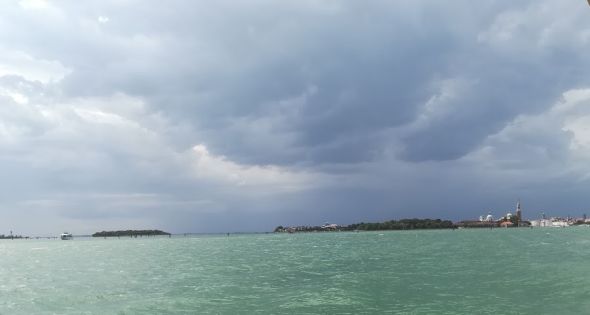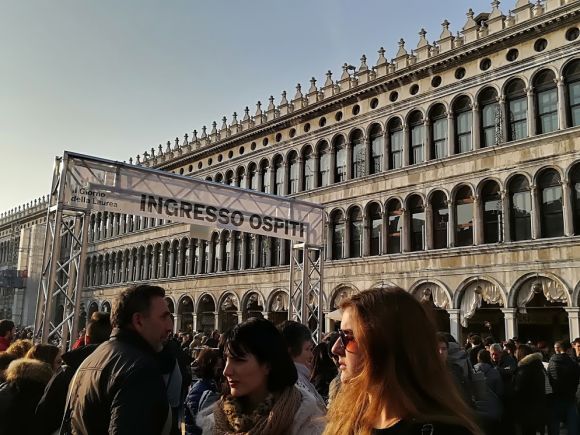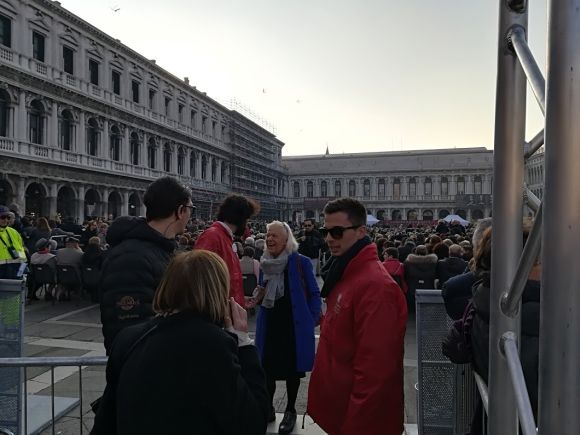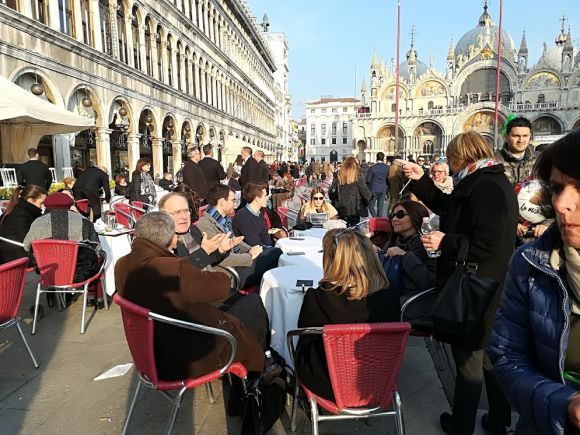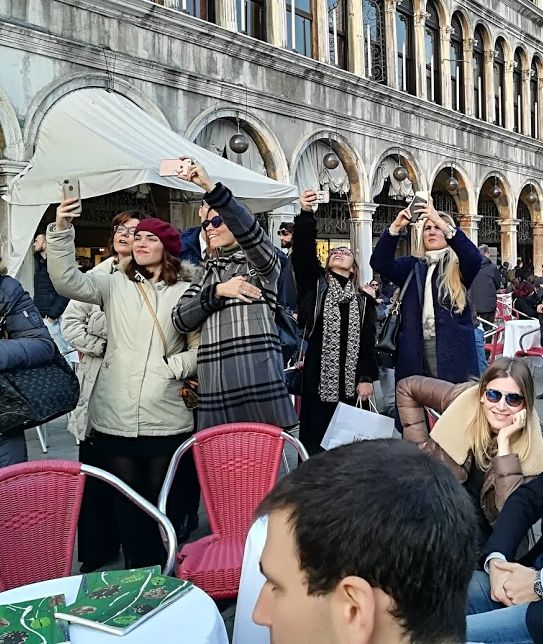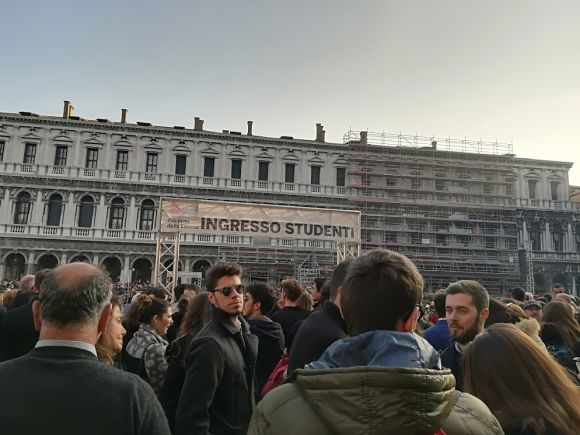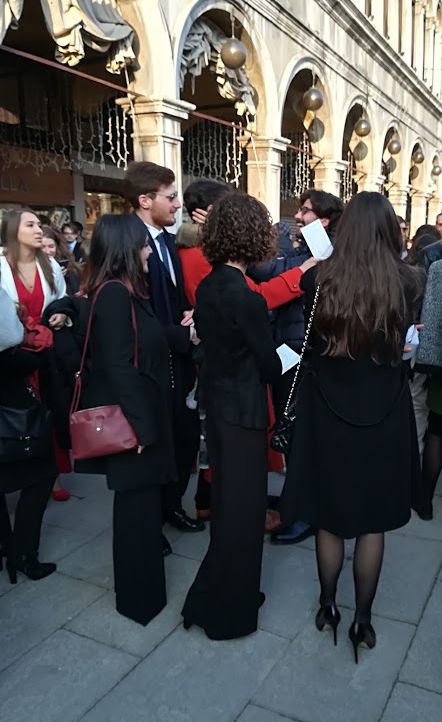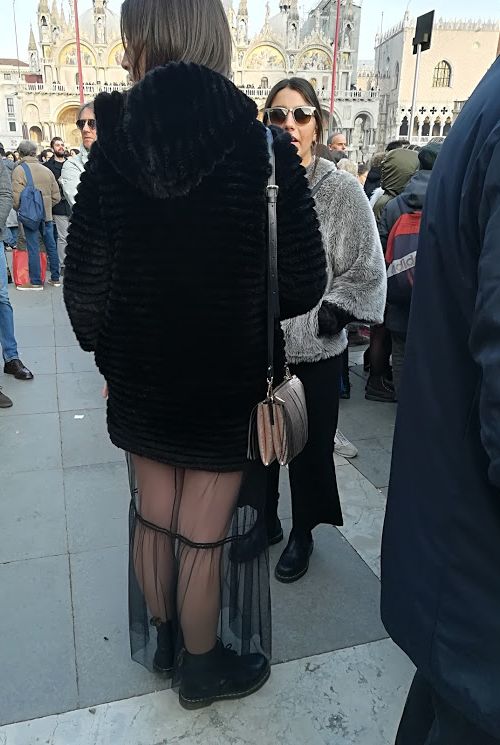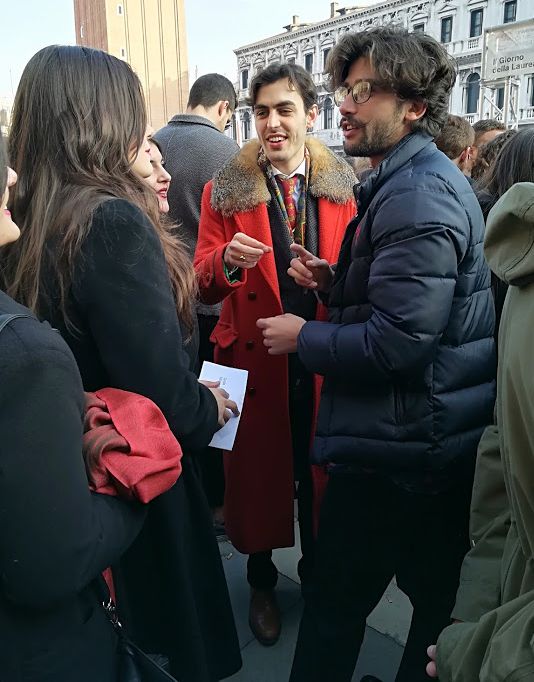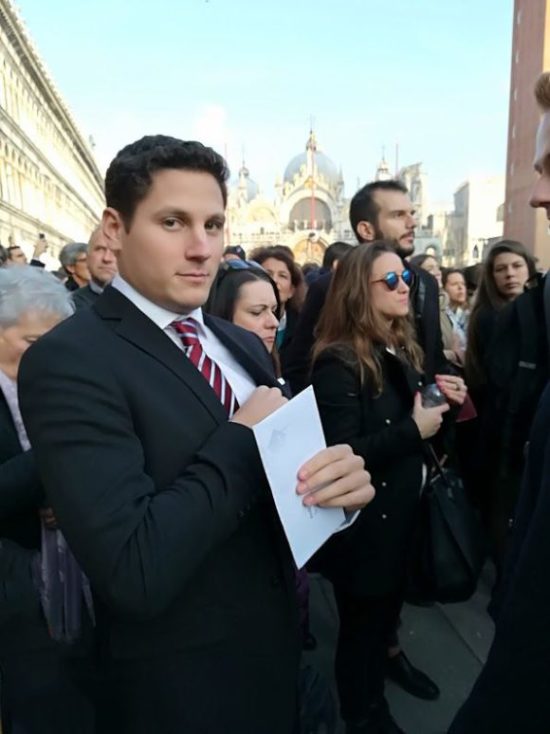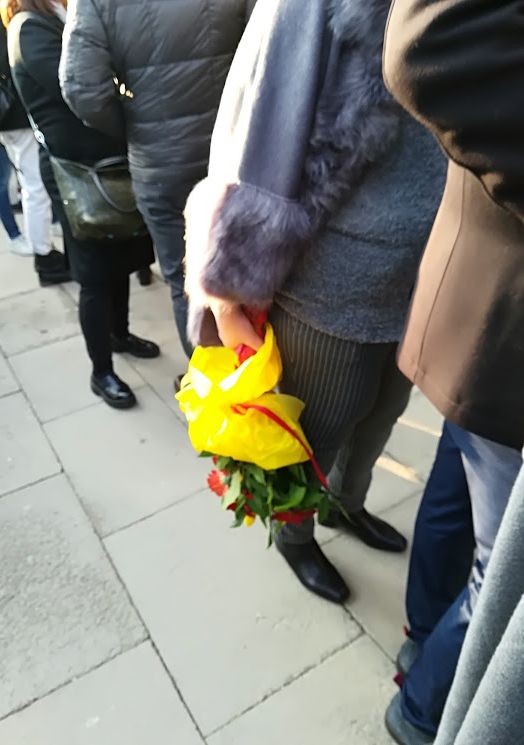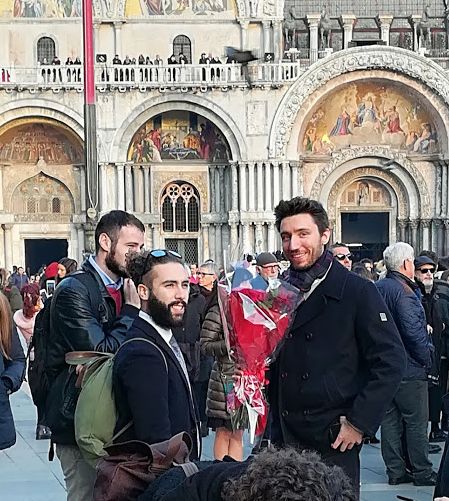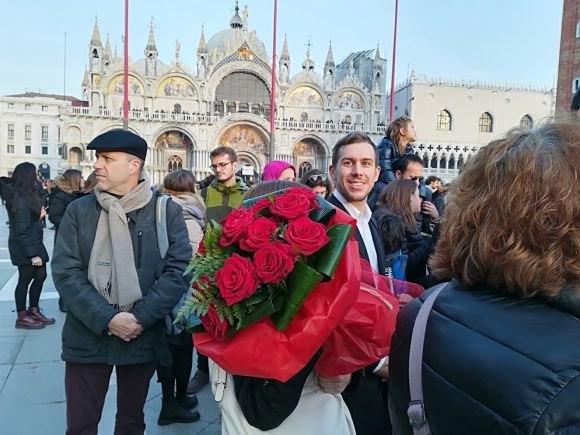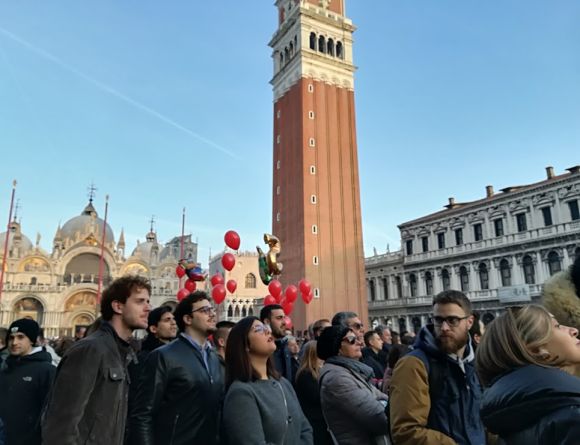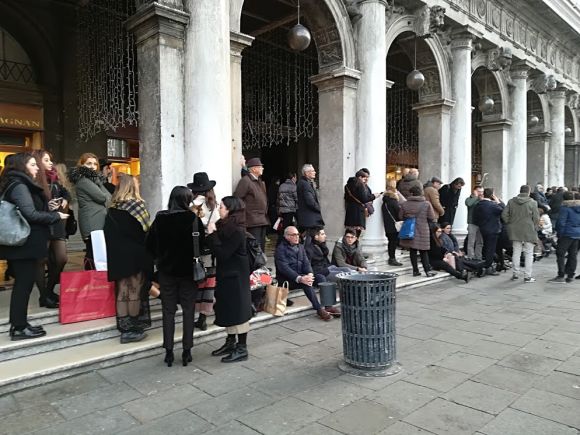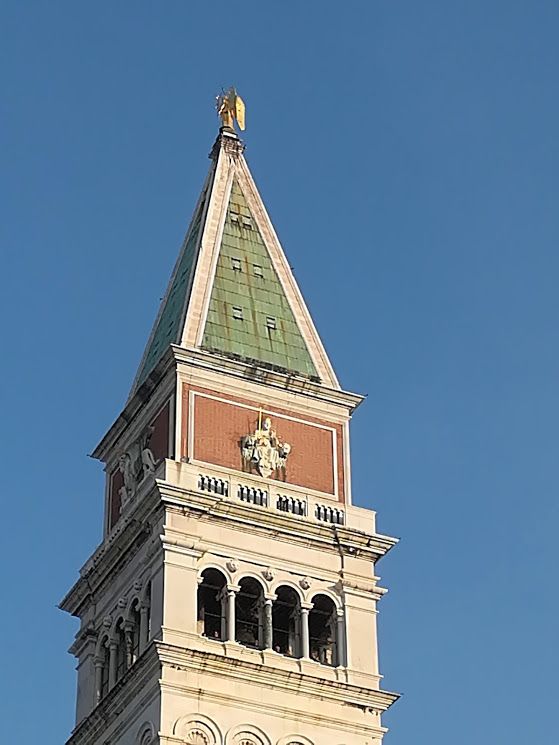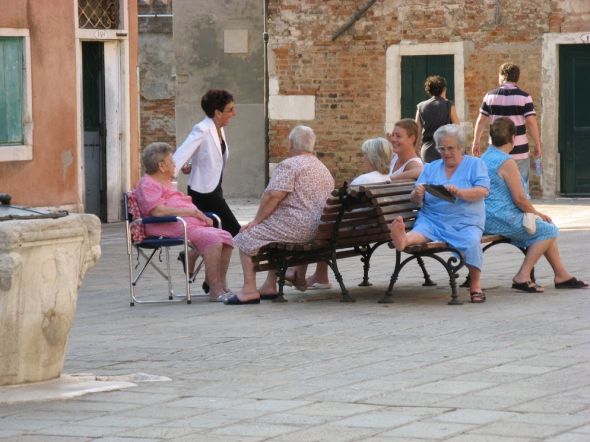
There are so many aspects to life in Venice — past, present, future — that it can be pretty challenging to separate what used to be true, what isn’t so true anymore, what we wish were true but never was… We, including the undersigned, so often want our fantasies about this amazing place to be reality, but one of those fantasies hit a wall a few days ago and disintegrated forever.
The “wall” was the house on the Calle del Cristo in the Santa Marta zone, and the fantasy — one of our very favorites — was that everybody in this very small town knows each other and keeps up with each other and knows what time you put on your socks every Saturday morning and what your spouse did to the teacher the day before Christmas vacation in second grade.
But everybody doesn’t notice everybody else anymore, and as the number of residents continues to drop the links of acquaintance weaken and break. (Ignore mixed metaphor.) People move away, people go into the hospital or nursing home and are never heard of again, relatives are who knows where, children grow up and leave. The people who are left don’t sit outside so much anymore, they tend to sit inside and watch TV.
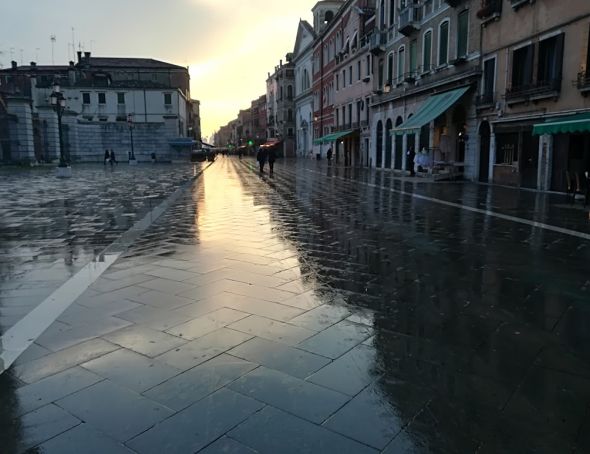
So what happened? On that unremarkable calle a man lived, died, and lay on his bed for seven years, surrounded by trash and old food and foraging rats, until last Saturday night a random burglar broke in, discovered the mummy that once was the man, and left the door open as he fled in terror. On Sunday a neighbor noticed the open door, peeked inside with his flashlight, and in two shakes the Carabinieri were there and on the case. So were the reporters, and the story has stunned readers in many different ways. How could this happen?
Setting aside the admittedly sensational aspects of the event, the most important thing isn’t that he was A MUMMY. It’s that he was a person who died alone and nobody knew it, not even his sister who lives on the Lido. (We’ll get back to that.) Seven years’ worth of bills lying on the floor; seven years of his bank account accumulating his monthly pension with no withdrawals since September 2011; seven years of the utilities having been shut off with not even a squeak of protest in response. “Hey, you turned off the lights/heat/water! I’m freezing!” And nobody noticed.
True, the shutters were always closed, the house number 2216 flaked away, the mailbox broken, the name on the doorbell illegible, all signs that would lead one to assume there was nobody inside.
In 2011 the city conducted a census and never received the completed questionnaire from him. After various bureaucratic cross-checks, in 2013 a city employee was sent to investigate, but no one answered the doorbell, and so he was eliminated from the database of the Office of Vital Statistics. Forgotten, but not, in fact, gone.
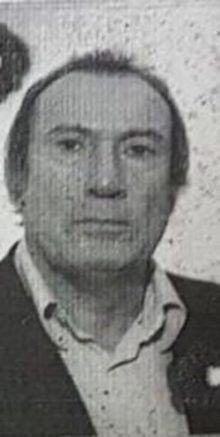
His name was Lelio Baschetti; he was born in Rimini in 1943. He graduated with a degree in astronomy, but went on to teach mathematics and some science subjects at the state high school “Duca degli Abruzzi” in Treviso. He moved to Venice at the end of the Nineties to teach at the Liceo Artistico not far from the Accademia Gallery.
Baschetti was shy, introverted, a solitary unmarried man who loved to paint evanescent scenes in pale pastel tones and whose pictures were exhibited in 2000 in the Benvenuti gallery at San Marco.
“That was a little unusual at our school,” commented the vice-principal of the Liceo, “an instructor of mathematics who painted. Usually it’s the art professors who paint and exhibit. Perhaps his paintings helped him to communicate, to overcome his nature. I went to see his show and I remember he was so happy that I was interested, he really appreciated it. He wasn’t difficult or peevish, but closed, turned in on himself.”
His solitude intensified. His students remembered that when school started in the fall he would say “Excuse me if I struggle to speak, but I haven’t talked with anybody all summer.”
“He was a thin man of medium height, a little hunchbacked,” recalled a school custodian; “I don’t know how he was in class, but certainly he was a very introverted person, silent. He didn’t answer me when I said hello and so after a little while I just stopped.”
“He was polite, but reserved,” recalled the vice-principal. “He was a man who had put a wall between himself and others. As a teacher he was neither too strict nor too soft, we never had any complaints about him from anyone.” Now, 15 years after he retired, hardly anyone is left who ever knew him.
“Perhaps the choice of teaching mathematics at the artistic high school was because he felt himself to be an artist,” mused an architect who knew him since 1975 at Treviso and later in Venice. “I remember I once complimented him on a painting and he looked at me as if I’d offended him. But when he was at Treviso he was very likeable, even though he was always a little ‘orso’ (bear) as they say here, but not as much as he became in Venice. When I ran across him later he had become very closed.” When his colleagues thought about organizing a retirement party for him, with a cake and toasts, he took it in very bad spirit and simply left.

Baschetti lived for many years with his sister and mother on the Lido, but when his mother passed away ten years ago he bought a two-level house of about 60 square meters (645 square feet) at Santa Marta and moved away. Perhaps there was some sort of falling-out. The sister has not confided in the Gazzettino.
He lived frugally and quietly, unhindered by intrusive neighbors because most of the inhabitants nearby are students at the nearby University of Architecture and the faculty of Environmental Sciences of Ca’ Foscari, the University of Venice, and students continually come and go. Also, as is so often the case now, many of the dwellings in his street were empty, so it wasn’t until three months ago that a student moved in to the house next door, someone who might have noticed him (or at least a terrible odor) if he hadn’t already long since departed. No friends, no Christmas or Easter or birthday phone calls from anybody. He just disappeared.
His sister and her husband heard about his death from the Carabinieri. The specific cause of death has yet to be determined. What is also being determined is the inheritance. His bank account contained some 80,000 euros of his pension which will probably be returned to the state, but he also had a savings account of some 100,000 euros. And there is the house, which once it’s fixed up ought to be worth a comfortable sum. If no other relative is located, all that will go to the sister, of course. That’s too ironic for me.
But it turns out that grown-up Lelio wasn’t the only one there ever was. Some of his boyhood friends remember someone who was very different, and they wrote a letter to the Gazzettino (translated by me):
“The beautiful youth of Prof. Baschetti:
We are writing in the name of numerous friends: We knew Prof. Lelio Baschetti in our and his youth and it’s right and fitting in this moment of sadness to give a portrait of the man in all of his facets. Lelio was a studious boy, cultured: the Seventies in Padova saw him a passionate student of physics, a kind and friendly classmate.
“We were part of the same group of young university students from Venice and the Lido. We want to remember his cheerfulness, the summer days we spent at the beach on the Lido, the evenings in the pizzeria, always ready for jokes and fun, but also in discussions and deep analysis. How can we forget the parties at the Circolo Ufficiali (Officers’ Club) of Venice, the New Year’s Eves: tireless dancer, and carefree companion.
Life has carried us all elsewhere, and sometimes far away, it has changed us and changed him, but this is the Lelio that we remember. We thank you if you want to publish this memory.”
When all the excitement is over, I hope that that is how he will be remembered. And not as a mummy.


